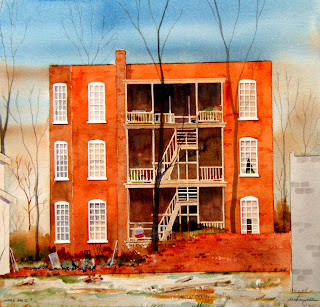I have never been to Italy, I cannot speak Italian, and both of my parents were born in this country. Yet I answer yes, when after hearing my name someone asks, “ are you Italian”? It would be more accurate to say I am a second generation Italian-American, but after reading this post perhaps you will understand why I feel the way I do.
My grandparents were born in Italy and immigrated to America as young adults. Salvatore Renzulli left his wife and 2 young children in Italy to find a better life for his family in America. Initially he lived in Philadelphia, but within a few years purchased a small farm in Landisville, a small farming town in southern New Jersey, about 30 miles east of Philadelphia. Shortly thereafter his wife Angelina and their 2 children joined him.
Emma Rondinelli arrived in America about the same time. Her journey was the mirror image of Salvatore’s, settling initially in Landisville, but later moving to the community of Italian immigrants in Philadelphia where she eventually married and started a family and lived in the same neighborhood for the rest of her life.
As fate would have it, Salvatore’s son, Spartaco, met Emma’s daughter, Josephine. Sparks flew, they ran off and got married in Elkton, Maryland, and 10 months later (honest – it was 10 months) yours truly arrived. My father, one of 8 surviving children chose to take over the family farm, where I was to spend the first 18 years of my life. Our household consisted of my mother and father, my grandfather, me, and from time to time a number of aunts and uncles who made the farm their temporary home.
The small farming community in which I grew up was settled by Italian immigrants at the end of the 19th century. The farms were small, 20-40 acres, but farmers often got more than one crop from the same land in one growing season. As one might expect from farms in the Garden State, they grew tomatoes, potatoes, lettuce, and peppers, as well as corn and eggplants.
Our neighbors, friends, and my school mates had names like: Genoni, Sciliano, Mattioli, Bruni, Marandino, Gallo, Berti, Pellagrini, Zorzi, Palmonari, Tromello, Tomasselo....well, you get the point. Children growing up in this rural community usually heard three spoken sounds in their homes, Italian, broken English, and English. My grandfather spoke to my father in Italian and to me in his broken English. My parents spoke to each other and to me in English (unless there was something I wasn't supposed to hear). Sadly, I never learned to speak Italian.
The widows with their gray or white hair held up in tight buns all wore black dresses and black stockings, and the men in their crumpled pants and shirts, with drooping mustaches smoked gnarled, smelly stogies. Every family had at least one “Zia” (aunt), and at all family gatherings everyone kissed everyone else on the cheek, accompanied by a big hug, when arriving and again when leaving.
My grandfather and father drank wine at every meal; it was made every year from the grapes in our vineyard and kept in 5 or 6 wooden barrels in our cellar. When the pigs were slaughtered, family and friends would join my parents and grandfather to make sausage, salami, and prosciutto, which could be seen hanging in the cellar or garage along with the hot peppers tied together to dry, and the garlands of garlic.
My mother made spaghetti (we called them macaroni-never used the word pasta), ravioli, cavetelli, whichwe ate in one form or another every Tuesday, Thursday, and Sunday, and every holiday. On Sunday morning she made gravy (sauce is another word we never used) for the big mid day meal, with enough left over for at least one more meal. A special treat for ‘brunch” was a thick slice of bread and one or two meatballs spooned from the pot of gravy on the stove. Of course the bread was Italian bread, but to us that was simply “bread”...sliced or white bread was “American bread”.
I was raised in a local culture that was saturated with the customs and practices of Italian immigrants and first generation Italian-Americans.
My childhood years sounded, smelled, and tasted Italian (basil-oregano-garlic)! As a young adult I left that town, and my home, and never thought twice about what I was leaving behind. Now in my late sixties I genuinely mourn the loss of those experiences and cherish the memories.

























